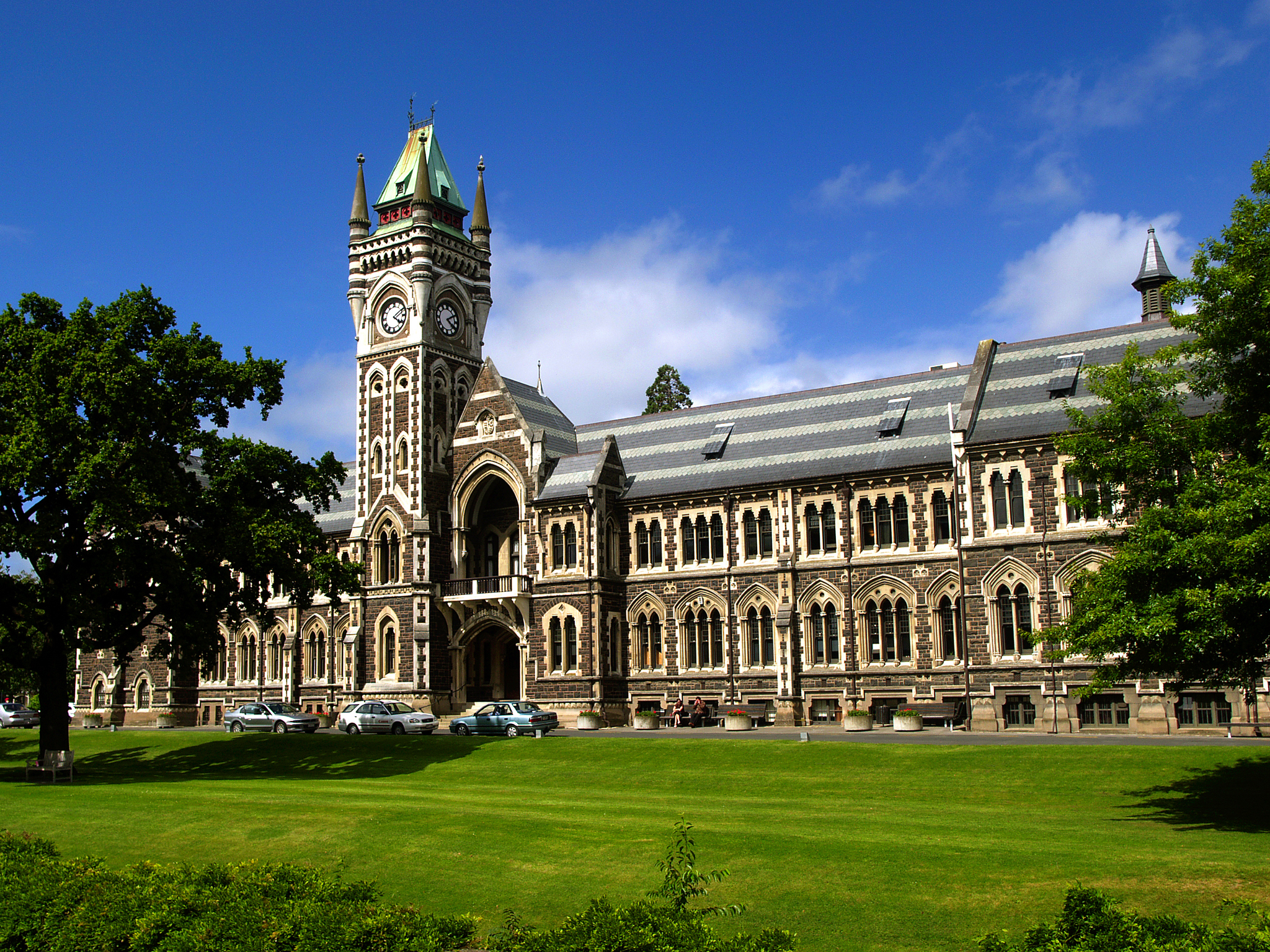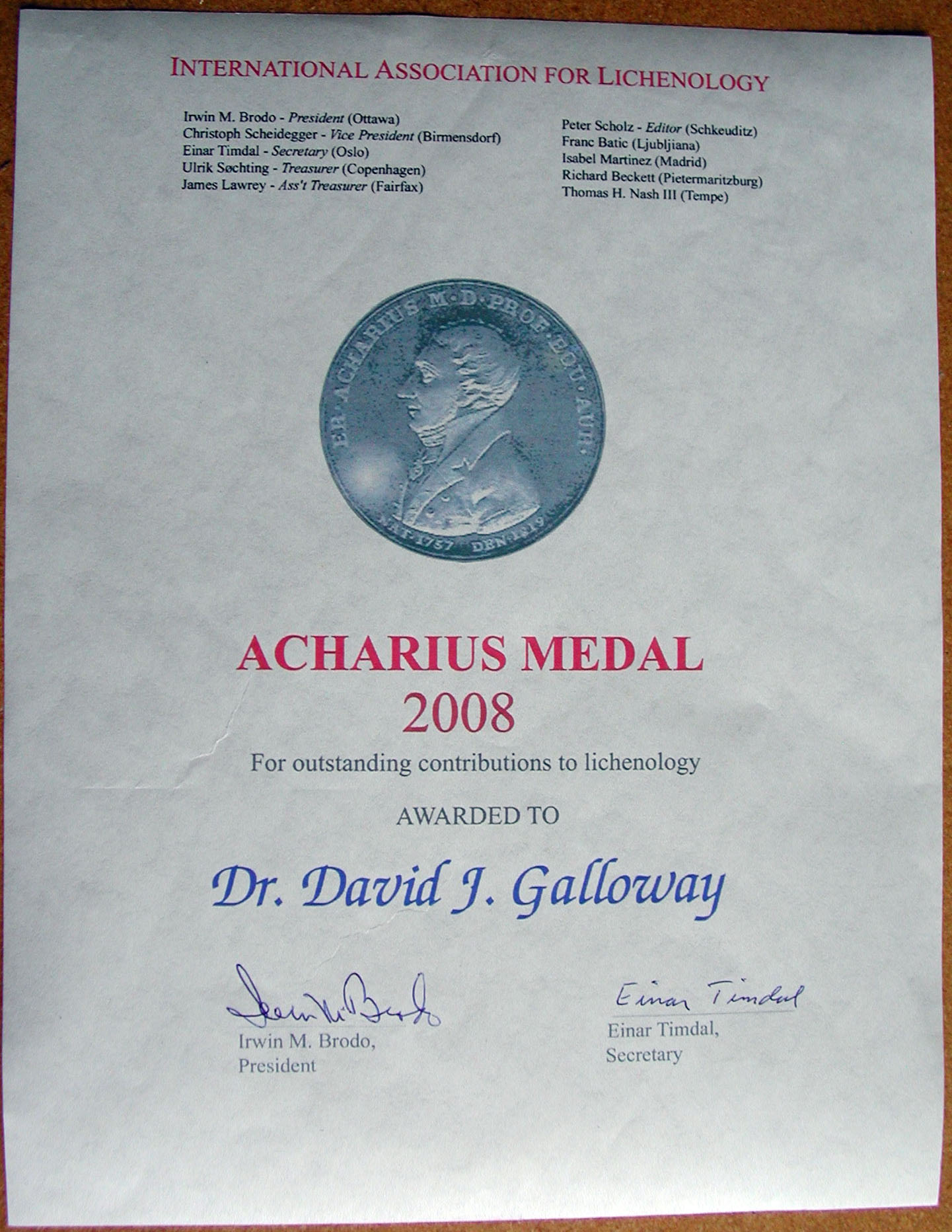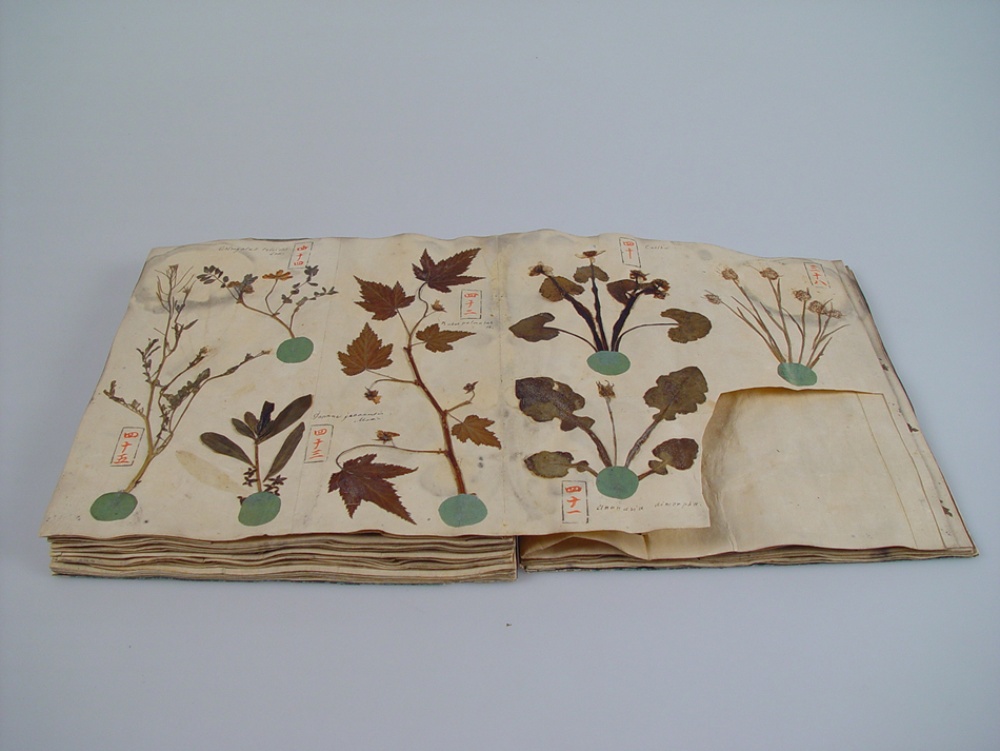|
Otago Regional Herbarium
The Otago Regional Herbarium is a herbarium A herbarium (plural: herbaria) is a collection of preserved plant specimens and associated data used for scientific study. The specimens may be whole plants or plant parts; these will usually be in dried form mounted on a sheet of paper (called ... based at the University of Otago, in Dunedin, in the South Island of New Zealand. It has the herbarium code OTA. It has 72,000 items, making it the second largest herbarium in the South Island. History The herbarium was established in 1946 by botanist Geoff Baylis. As of 2020, the vascular plant, bryophyte and lichen collection is curated by Janice Lord, and the fungal and slime mold collection by David Orlovich. Collections The collection includes more than 120 type specimens. There are approximately 15,000 lichen accessions, circa 10,000 bryophyte accessions, 3000 algae accessions and approximately 44,000 vascular plant accessions. The specimens are not yet fully databased. Th ... [...More Info...] [...Related Items...] OR: [Wikipedia] [Google] [Baidu] |
Dunedin
Dunedin ( ; mi, Ōtepoti) is the second-largest city in the South Island of New Zealand (after Christchurch), and the principal city of the Otago region. Its name comes from , the Scottish Gaelic name for Edinburgh, the capital of Scotland. The city has a rich Scottish, Chinese and Māori heritage. With an estimated population of as of , Dunedin is both New Zealand's seventh-most populous metro and urban area. For historic, cultural and geographic reasons the city has long been considered one of New Zealand's four main centres. The urban area of Dunedin lies on the central-eastern coast of Otago, surrounding the head of Otago Harbour, and the harbour and hills around Dunedin are the remnants of an extinct volcano. The city suburbs extend out into the surrounding valleys and hills, onto the isthmus of the Otago Peninsula, and along the shores of the Otago Harbour and the Pacific Ocean. Archaeological evidence points to lengthy occupation of the area by Māori prior to the ar ... [...More Info...] [...Related Items...] OR: [Wikipedia] [Google] [Baidu] |
Otago
Otago (, ; mi, Ōtākou ) is a region of New Zealand located in the southern half of the South Island administered by the Otago Regional Council. It has an area of approximately , making it the country's second largest local government region. Its population was The name "Otago" is the local southern Māori dialect pronunciation of "Ōtākou", the name of the Māori village near the entrance to Otago Harbour. The exact meaning of the term is disputed, with common translations being "isolated village" and "place of red earth", the latter referring to the reddish-ochre clay which is common in the area around Dunedin. "Otago" is also the old name of the European settlement on the harbour, established by the Weller Brothers in 1831, which lies close to Otakou. The upper harbour later became the focus of the Otago Association, an offshoot of the Free Church of Scotland, notable for its adoption of the principle that ordinary people, not the landowner, should choose the ministe ... [...More Info...] [...Related Items...] OR: [Wikipedia] [Google] [Baidu] |
New Zealand
New Zealand ( mi, Aotearoa ) is an island country in the southwestern Pacific Ocean. It consists of two main landmasses—the North Island () and the South Island ()—and over 700 smaller islands. It is the sixth-largest island country by area, covering . New Zealand is about east of Australia across the Tasman Sea and south of the islands of New Caledonia, Fiji, and Tonga. The country's varied topography and sharp mountain peaks, including the Southern Alps, owe much to tectonic uplift and volcanic eruptions. New Zealand's capital city is Wellington, and its most populous city is Auckland. The islands of New Zealand were the last large habitable land to be settled by humans. Between about 1280 and 1350, Polynesians began to settle in the islands and then developed a distinctive Māori culture. In 1642, the Dutch explorer Abel Tasman became the first European to sight and record New Zealand. In 1840, representatives of the United Kingdom and Māori chiefs ... [...More Info...] [...Related Items...] OR: [Wikipedia] [Google] [Baidu] |
Herbarium
A herbarium (plural: herbaria) is a collection of preserved plant specimens and associated data used for scientific study. The specimens may be whole plants or plant parts; these will usually be in dried form mounted on a sheet of paper (called ''exsiccatum'', plur. ''exsiccata'') but, depending upon the material, may also be stored in boxes or kept in alcohol or other preservative. The specimens in a herbarium are often used as reference material in describing plant taxa; some specimens may be types. The same term is often used in mycology to describe an equivalent collection of preserved fungi, otherwise known as a fungarium. A xylarium is a herbarium specialising in specimens of wood. The term hortorium (as in the Liberty Hyde Bailey Hortorium) has occasionally been applied to a herbarium specialising in preserving material of horticultural origin. History The making of herbaria is an ancient phenomenon, at least six centuries old, although the techniques have changed l ... [...More Info...] [...Related Items...] OR: [Wikipedia] [Google] [Baidu] |
University Of Otago
, image_name = University of Otago Registry Building2.jpg , image_size = , caption = University clock tower , motto = la, Sapere aude , mottoeng = Dare to be wise , established = 1869; 152 years ago , type = Public research collegiate university , endowment = NZD $279.9 million (31 December 2021) , budget = NZD $756.8 million (31 December 2020) , chancellor = Stephen Higgs , vice_chancellor = David Murdoch , administrative_staff = 2,246 (2019) , academic_staff = 1,744 (2019) , students = 21,240 (2019) , undergrad = 15,635 (2014) , postgrad = 4,378 (2014) , doctoral = 1,579 (2019) , other = , city = Dunedin , province = Otago , country = New Zealand (Māori: ''Ōtepoti, Ōtākou, Aotearoa'') , coor = , campus = Urban/University town 45 ha (111 acres) , colours = Dunedin Blue and Gold , free_label = Student Magazine , free = ''Critic'' , affiliations = MNU , website https://www.otago.ac.nz, logo = Logo of the University of Otago.svg The Unive ... [...More Info...] [...Related Items...] OR: [Wikipedia] [Google] [Baidu] |
Geoff Baylis
Geoffrey Thomas Sandford Baylis (24 November 1913 – 31 December 2003) was a New Zealand botanist and Emeritus Professor specialising in plant pathology and mycorrhiza. He was employed at the University of Otago for 34 years undertaking research into plant and fungal ecology and symbiotic interactions, taxonomy and anatomy. He collected hundreds of plant specimens in the field and founded the Otago Regional Herbarium (OTA). He discovered the sole ''Pennantia baylisiana'' living on Three Kings Island in 1945, and was elected as a Fellow of the Royal Society of New Zealand in 1961. Early life and education Baylis was born in Palmerston North to Gerald Baylis, an agricultural scientist, and his wife Daisy (Kathleen Daisy Baylis (nee Aston), sister of New Zealand botanist Bernard Aston). The family moved to Campbells Bay on Auckland's North Shore in 1920, where Geoff and his sister Geraldine attended Takapuna Primary School and were then some of the first students at Campbel ... [...More Info...] [...Related Items...] OR: [Wikipedia] [Google] [Baidu] |
Janice Lord
Janice Marjorie Lord is a New Zealand academic, a plant evolutionary biologist, and as of 2020 is an associate professor at the University of Otago, where she is the curator of the Otago Regional Herbarium. Academic career After a PhD titled ''The evolutionary ecology of ''Festuca novae-zelandiae'' in mid-Canterbury, New Zealand'', submitted to the University of Canterbury in 1992, Lord moved to the Department of Botany at the University of Otago, where she is an associate professor. Lord's research focuses on how the New Zealand fauna have shaped plant flora through pollination and fruit dispersal systems. She has worked particularly on alpine plant communities, but has also published on subantarctic megaherbs, and the use of traditional knowledge of native plants in botany. She is also interested in mycorrhizal flora for ecological restoration, and carbon sequestration by native plants. She is a principal investigator for the 1 Billion Trees project, and is part of the Ota ... [...More Info...] [...Related Items...] OR: [Wikipedia] [Google] [Baidu] |
David Orlovich
David (; , "beloved one") (traditional spelling), , ''Dāwūd''; grc-koi, Δαυΐδ, Dauíd; la, Davidus, David; gez , ዳዊት, ''Dawit''; xcl, Դաւիթ, ''Dawitʿ''; cu, Давíдъ, ''Davidŭ''; possibly meaning "beloved one". was, according to the Hebrew Bible, the third king of the United Kingdom of Israel. In the Books of Samuel, he is described as a young shepherd and harpist who gains fame by slaying Goliath, a champion of the Philistines, in southern Canaan. David becomes a favourite of Saul, the first king of Israel; he also forges a notably close friendship with Jonathan, a son of Saul. However, under the paranoia that David is seeking to usurp the throne, Saul attempts to kill David, forcing the latter to go into hiding and effectively operate as a fugitive for several years. After Saul and Jonathan are both killed in battle against the Philistines, a 30-year-old David is anointed king over all of Israel and Judah. Following his rise to power, Siege of ... [...More Info...] [...Related Items...] OR: [Wikipedia] [Google] [Baidu] |
David John Galloway
David John Galloway , FRSNZ (7 May 1942 – 6 December 2014) was a biochemist, botanist, and lichenologist. Biography Galloway grew up in Invercargill. After graduation from Southland Boys' High School, he studied at the University of Otago. As an undergraduate he assisted James Murray (lichenologist), James Murray, the first New Zealand lichenologist of the twentieth century, and this experience influenced the direction of his scientific career. There he graduated in 1963 with B.Sc., in 1965 with M.Sc., and in 1972 with Ph.D. — all three degrees in biochemistry. At the University of Otago, he was from 1963 to 1965 a fellow and tutor at Knox College, Otago, Knox College and from 1965 to 1968 an assistant lecturer in biochemistry. He became in 1969 a scientific officer in the Applied Biochemistry Division of Department of Scientific and Industrial Research (New Zealand), New Zealand's Department of Scientific and Industrial Research (DSIR) in Palmerston North. He transferred in ... [...More Info...] [...Related Items...] OR: [Wikipedia] [Google] [Baidu] |
Alan Mark
Sir Alan Francis Mark (born 19 June 1932) is a New Zealand botanist and environmentalist. He was an initial member of the Save Manapouri campaign and the inaugural chair of the Guardians of Lake Manapouri for 26 years. Biography Mark was born in 1932 in Dunedin. His parents were Frances Evelyn Mark ( Marshall) and Cyril Lionel Mark. He attended Mornington School in Dunedin and received his secondary education at Mosgiel District High School in Mosgiel. He then graduated from the University of Otago with a Bachelor of Science in 1953, and a Master of Science in 1955. He obtained his PhD from Duke University in North Carolina, United States, in 1958. From 1958 to 1959, he was a plant ecologist for the Otago Catchment Board. Since 1960, he has been at the University of Otago; first as a lecturer, then reader, then associate professor, and (since 1975) professor. From 1960 to 1964, he was a research fellow for the Miss E. L. Hellaby Indigenous Grasslands Research Trust. During ... [...More Info...] [...Related Items...] OR: [Wikipedia] [Google] [Baidu] |
Audrey Eagle
Audrey Lily Eagle (née Brodey; 30 October 1925 – 27 November 2022) was a New Zealand botanical illustrator, whose work mainly focused on New Zealand's distinctive trees and shrubs. As the author and illustrator of the two volume ''Eagle's Complete Trees and Shrubs of New Zealand'', Eagle made a notable contribution to New Zealand botany.Brownsey, Dr Patrick (2013). "Introduction". In Eagle, Audrey. ''The Essential Audrey Eagle''. Wellington: Te Papa Press, 2013, pp. 21–23. Early life and education Eagle was born Audrey Lily Brodey on 30 October 1925 in Timaru, New Zealand, to English parents. After primary school in New Zealand, her family moved to England in 1933, and she attended the following secondary schools from 1936 to 1943: Horsham High School for Girls, Fulham County Secondary School for Girls, and Banbury County School. She then went on to study engineering drafting at the Government Training Centre at Slough in 1944, and gained an Ordinary National Certi ... [...More Info...] [...Related Items...] OR: [Wikipedia] [Google] [Baidu] |
Herbaria In New Zealand
A herbarium (plural: herbaria) is a collection of preserved plant specimens and associated data used for scientific study. The specimens may be whole plants or plant parts; these will usually be in dried form mounted on a sheet of paper (called '' exsiccatum'', plur. ''exsiccata'') but, depending upon the material, may also be stored in boxes or kept in alcohol or other preservative. The specimens in a herbarium are often used as reference material in describing plant taxa; some specimens may be types, some may be specimens distributed in series called exsiccatae. The same term is often used in mycology to describe an equivalent collection of preserved fungi, otherwise known as a fungarium. A xylarium is a herbarium specialising in specimens of wood. The term hortorium (as in the Liberty Hyde Bailey Hortorium) has occasionally been applied to a herbarium specialising in preserving material of horticultural origin. History The making of herbaria is an ancient phenomeno ... [...More Info...] [...Related Items...] OR: [Wikipedia] [Google] [Baidu] |

.jpg)




